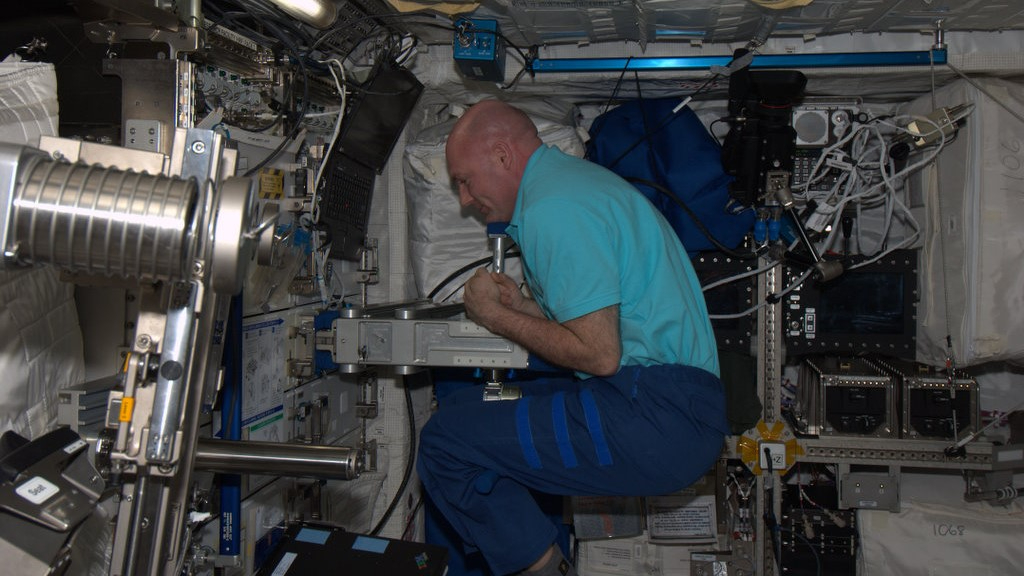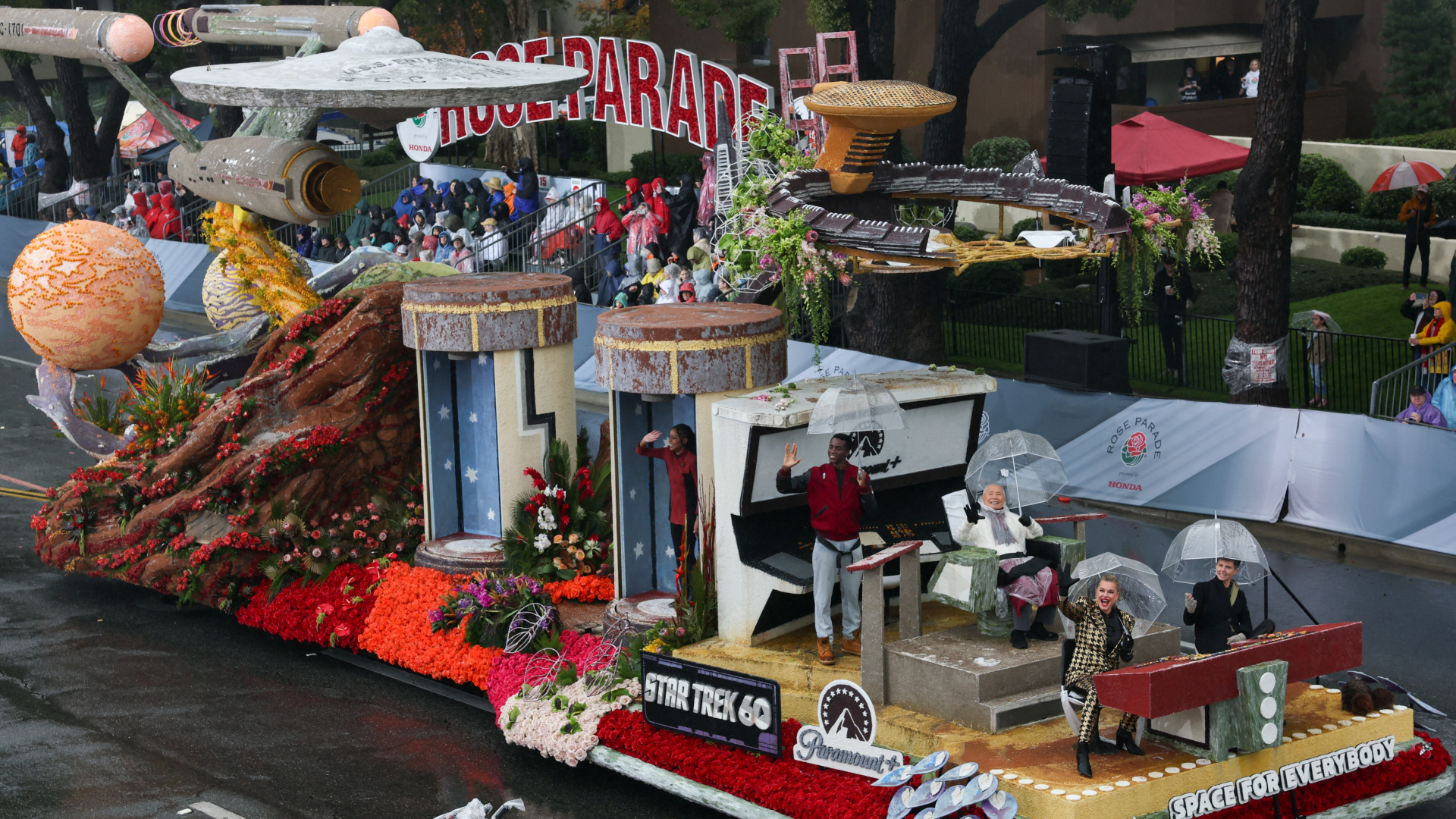How do astronauts weigh themselves in space?
Using Newton's laws of motion and devices made from springs, astronauts on the International Space Station can measure their body mass.


Microgravity in low Earth orbit is a demanding environment for the human body. Its effects on astronauts are still being researched, and astronauts must ensure they stay in peak fitness while on the International Space Station (ISS).
On Earth, our fitness routines are often designed around our weight. But how can astronauts measure their weight when they are effectively weightless in space?
There are two devices on board the ISS that can do this: NASA's Space Linear Acceleration Mass Measurement Device (SLAMMD) and Russia's Body Mass Measurement Device (BMMD). Both devices apply the action of springs to measure astronauts' body mass rather than weight.
Weight vs. mass
Your weight is your mass multiplied by the acceleration caused by the gravitational field around you. Because gravity is lower on the moon than on Earth, for example, the Apollo astronauts weighed less while walking on the lunar surface. But if you are overweight on Earth, your extra body mass doesn't just disappear. Although a weighing scale on the moon would give you a different reading than it would on Earth, your mass measurements would be the same. That's why astronauts on the ISS measure their body mass, not their weight.
Related: How do astronauts use the bathroom in space?
Mass, like weight, is measured in pounds or kilograms, and perhaps that's why they are sometimes confused. Your mass is the amount of material your body contains, along with its density, regardless of gravity.
How astronauts measure their mass
So how do the astronauts on the ISS measure their mass?
Breaking space news, the latest updates on rocket launches, skywatching events and more!
SLAMMD takes advantage of Isaac Newton's second law of motion, which is that a force's strength is equal to the mass that the force is pushing multiplied by the acceleration of that mass when it is pushed by that force. Or, in shorthand, F = ma.
Based in the ISS' European-built Columbus laboratory, SLAMMD is part of the Human Research Facility Rack, which is a set of "panel-unit drawers" containing built-in equipment. SLAMMD sticks out on a chunky "guide arm." To use SLAMMD, an astronaut must wrap their legs around the leg-support assembly, align their stomach against the belly pad, and rest their head or chin on the headrest. Two springs in one of the panel-unit drawers are released, and their force pushes the guide arm against the astronaut, causing the astronaut to be pushed back.

The force exerted by the springs is already known, given that the springs were built to certain specifications. The astronaut's acceleration as they are pushed back by the springs is measured by an optical instrument that tracks the motion of the guide arm and how fast it moves in a certain amount of time.
Acceleration is calculated by dividing the change in velocity over that distance (about a meter) by the time taken. A laptop attached to SLAMMD can then perform the simple calculation F = ma to determine the astronaut's body mass to within an accuracy of half a pound (0.2 kilograms).
The Russian method uses the BMMD, which is found in the space station's Zvezda module. Like SLAMMD, it uses springs. But instead of using a one-time push, an astronaut crouches onto it (in microgravity, this is a lot easier to do and stay balanced) and sets it going like a pogo stick, moving up and down. The speed with which it oscillates depends on the mass of the astronaut on top of it; with nothing on it, the BMMD oscillates much faster. Therefore, timing the period provides a good estimate of the astronaut's body mass.

Why it's important to track astronauts' body mass
It's important for astronauts to measure their body mass while they're in space to ensure they are not losing too much body mass. That's because microgravity is a harsh environment for the human body. An astronaut loses 1% of their bone density each month, on average, while in space. Muscles also atrophy, and the heart weakens because it doesn't need to work as hard to pump blood around an astronaut's body.
To counteract the effect of microgravity, astronauts on the ISS exercise for two hours each day in the space station's onboard gym to maintain muscle mass, bone density and cardiovascular health. Measuring their body mass plays a vital part in checking that they remain fit and healthy.

Keith Cooper is a freelance science journalist and editor in the United Kingdom, and has a degree in physics and astrophysics from the University of Manchester. He's the author of "The Contact Paradox: Challenging Our Assumptions in the Search for Extraterrestrial Intelligence" (Bloomsbury Sigma, 2020) and has written articles on astronomy, space, physics and astrobiology for a multitude of magazines and websites.
